Common Causes of Collision: It’s More Complicated Than You Think

Traveling in Washington can be an exhilarating experience. Take to the roads of the Evergreen State and you’ll encounter breathtaking ocean views, majestic mountains, and scenic skylines. Unfortunately, you will also confront poor drivers: speeders, texters, and motorists under the influence of alcohol and mind-altering drugs, among others.
Bad drivers are difficult to avoid. The only way to stay clear of them altogether is never to use the road, which isn’t an option for most Washingtonians. And so, from time to time bad drivers intrude on our lives and wellbeing by causing car accidents, from minor fender-benders to major catastrophes. The former causes headaches and annoyance; the latter can rob you of weeks, months, or even years of your life, leading to financial and personal upheaval.
In this blog post, we discuss the common causes of motor vehicle collisions and the sometimes complicated analysis lawyers, insurance companies, judges, and juries must make in determining who is at fault. If you’ve recently been involved in a car accident contact Boohoff Law and speak with a skilled car accident attorney to discuss your legal options today.
Current Factors in Washington Collisions
The Washington State Crash Data Portal provides up-to-date information about motor vehicle accidents in Washington State. It is a valuable public resource that makes it possible to track accident totals and trends in near real-time. The latest statistics through mid-November 2019 include these accident characteristics and causes.
The Washington Department of Transportation documented 77,223 accidents.
- Alcohol: Drunk drivers were involved in 5,339 accidents. 84 people died and 370 sustained what police officers suspected were serious injuries. Alcohol diminishes a driver’s functioning abilities and their ability to control their vehicle. 6,326 accidents involved drivers who admitted that they had been drinking. Drunk driving is a significant factor in serious injury and fatal accidents. National Highway Traffic Safety Administration data shows that impairment occurs at BAC levels far below what is considered legally impaired. Drivers who had been drinking were involved in 454 accidents with fatalities or serious injuries.
- Fatigue: Drowsy driving is difficult to document but it was a known factor in 541 accidents this year. It occurs when drivers fail to get enough sleep, if they’re on medication, and if they suffer from conditions such as sleep apnea. Drowsy driving was a factor documented in 50 accidents involving fatalities and serious injuries.
- Drug-Impairment: Police officers have confirmed drug use as a factor in 752 accidents so far in 2019. The drugs that contribute to driver error or negligence can be legitimate prescriptions, illegal drugs or legal THC-containing products. 54 people sustained fatal or serious injuries in accidents involving drug use.
- Distraction: 7,308 of Washington accidents involved distracted drivers. Distracted drivers were involved in 162 accidents with fatal or serious injuries.
“Cause” Is a Complicated Concept
The factors above play a role in accidents on Washington State roads, undoubtedly. But do they cause those accidents in a legal sense? Let’s take a closer look.
What Lawyers Mean When They Talk About Cause
Ask someone to define the word cause and you will likely get a slew of vague, maybe even philosophical, answers. But if you put that question to a lawyer, the response is likely to include some mention of the concept of proximate cause, a legal doctrine judges, lawyers, and scholars have debated for nearly a century and still struggle to agree on, even though it forms a core part of how we assign liability for damages in personal injury lawsuits.
Most lawyers and judges (never mind the law professors) understand proximate cause to mean some combination of two ideas:
- That the initial event occurred close enough in time and space for there to be a direct connection between it and a subsequent event; and
- That the subsequent event was a reasonably foreseeable consequence of the initial event.
If those two ideas seem about as clear as mud to you, then you are not alone. But here are two illustrations of how we might apply them in practice.
The Texting Drunk Driver Example
Auburn, Washington: A 40-year old driver allegedly runs a stop sign while texting and possibly under the influence of alcohol. The driver’s vehicle allegedly collides with one driven by a 17-year old student, sending him to the hospital with serious head injuries that require emergency surgery.
What is the proximate cause of the accident? Any of the following would seem to qualify if we follow the common understandings above:
- Running the stop sign;
- Texting-while-driving; and
- Driving under the influence.
Lawyers might sum up all three of those factors by saying “Reckless driving was the proximate cause of the accident.” And that sounds about right. Reckless driving seems directly connected to the collision, and a collision is the reasonably foreseeable consequence of driving recklessly.
The Seattle Seahawks Example
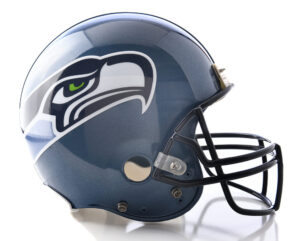 In 2015, the Highway Loss Data Institute published a report, Collision Claim Frequencies and NFL Games, which concluded, among other things, that traffic accidents in neighborhoods surrounding NFL stadiums increase in frequency after games, and especially after games the home team loses. The post-game accident statistics for Seahawks games put Seattle among the ten teams with higher-than-average post-game accident rates nationally (though during the time period covered by the study, 2011 to 2013, the Seahawks went 19 and 5 at home).
In 2015, the Highway Loss Data Institute published a report, Collision Claim Frequencies and NFL Games, which concluded, among other things, that traffic accidents in neighborhoods surrounding NFL stadiums increase in frequency after games, and especially after games the home team loses. The post-game accident statistics for Seahawks games put Seattle among the ten teams with higher-than-average post-game accident rates nationally (though during the time period covered by the study, 2011 to 2013, the Seahawks went 19 and 5 at home).
So suppose the same accident as described above occurs, the only difference being that the reckless driver got into the accident after a (rare) Seahawks home loss. Considering the research above, could we say the Seahawks’ actions were the proximate cause of the accident? No. Why not? Because:
- Despite the research, there isn’t anything resembling a direct link between the Seahawks winning or losing and this specific accident. The study only shows a potential correlation.
- It is not reasonably foreseeable that the consequences of the Seahawks’ include an individual fan driving drunk, texting and driving, or ignoring a stop sign. After all, the vast majority of Seahawks fans (not to mention fans of countless other sports teams) make it home after a game, win or lose, without getting into a collision.
It doesn’t take a legal scholar to see how far-fetched it would be to sue a sports franchise for causing a fan to get into a car accident. But some cases make for much closer calls. For example:
- Was a bartender’s decision to pour a beer for the driver, who didn’t appear drunk but had an above-the-legal-limit blood alcohol content, the proximate cause of the accident? (Under Washington State law, the bar owner could be held liable if so.)
- Was a drug manufacturer’s failure to warn about dangerous side effects of a medication the driver was taking, particularly when combined with alcohol, the proximate cause of the accident?
- Were the repeated texts sent by the driver’s angry girlfriend, who demand he respond immediately even while knowing the driver was behind the wheel, the proximate cause of the accident if he didn’t pull over to read and answer them?
There are reasonable scenarios in which each of these questions might be answered in the affirmative. Proving them, however, requires the skill and experience of a seasoned car accident attorney.
Who Decides the Cause of an Accident?
Identifying one or more causes of an accident is not simply a philosophical exercise for lawyers. Who-or-what caused an accident has real-world implications for everyone involved in a collision, such as:
- Determining who has civil liability for money damages to accident victims;
- Who receives a traffic citation for the accident;
- Who has criminal liability, if any, for the harm caused by the accident; and
- Whose insurance pays for damage caused by the accident.
Numerous parties may determine the cause of a collision for these purposes.
Police Officers
Police officers who arrive at an accident scene typically collect information and prepare a report documenting the officers’ findings. This may include the police officer’s evaluation of what caused an accident, and may serve as the basis for issuing a citation or even for arresting someone.
A police officer’s determination of cause (and its related concept fault), however, does not constitute a conclusive determination. Any person whose rights are affected by the police officer’s determination of cause can, ultimately, challenge it in a court of law if doing so is worth their while.
Insurance Companies
Like police officers, insurance companies also take guidance in their own actions from a determination of the cause of a collision. What caused a collision will affect whether and to what extent the insurance company has an obligation to pay insurance benefits to its insured. For example, an insurance policy may cover collisions caused by foul weather, but not ones in which the insured driver intentionally collided with another vehicle.
Insurance companies employ adjusters, whose job is to investigate a claim by an insured party against an insurance policy. In conducting that investigation, the adjuster typically reviews police reports and interviews its insured party. Depending on the size and significance of the claim, the adjuster may also dig deeper to uncover additional facts weighing on the question of cause. Attorneys for the parties involved in the accident often become the adjuster’s allies or adversaries in this investigation, insofar as they want to influence the adjuster’s conclusion and the outcome of a claim.
Attorneys
Attorneys hired by parties involved in a collision (and/or their insurers) also take a keen interest in evaluating the cause of a collision. As we’ve described above, attorneys formulate their investigation with a view toward how they can prove (or disprove, as the case may be) what was the proximate cause of an accident.
In building a case around proving proximate cause, attorneys do much the same type of investigation as that conducted by an insurance adjuster (and as we said, sometimes the two work hand-in-hand, or at least side-by-side). Attorneys review police reports, interview their own clients and other witnesses, and collect visual and forensic evidence.
When the stakes of a case are high, or when the attorney determines that it will take some convincing to extract money from an insurance company or a jury, an attorney will also often hire and work with experts in the fields of accident reconstruction, road design, and automotive engineering (to name just a few). The purpose of working with an expert is to prepare a strong argument for proving proximate cause. After all, it is not enough to simply say “the collision was caused by brake failure.” In a courtroom, the attorney must show evidence of defective brakes if she wants to convince a jury to award her client damages.
Judges and Juries
In most personal injury matters involving a motor vehicle collision, attorneys for the parties and/or their insurance companies attempt to negotiate a resolution (or settlement) of the claims of accident victims. In a broad sense, each side tries to convince the other of the strength and merits of their arguments, based on evidence that proves what caused the accident.
Usually, these negotiations lead to a mutual resolution of a claim. But not always. Sometimes the parties cannot agree on what caused an accident and who should have legal liability for it. When that happens, the attorney representing the injured accident victim takes her client’s case to Washington State court, to be decided by a judge and/or jury. The judge and jury hear evidence and decide the disputed issue of the cause of the collision, using that decision as their guide in determining legal liability and damages.
Contact an Experienced Collision Injury Attorney
It is not always easy to determine the cause of a collision, much less to figure out which of those causes points to legal liability. Every collision has its own unique facts, and that is why having skilled legal counsel represent you after a collision is so important.
Consult an experienced car accident attorney as soon as possible after a motor vehicle accident injures you. The sooner you speak with an attorney, the sooner the attorney can get involved in investigating the cause of the collision, and in building the strongest argument for why you deserve compensation for your injuries.
2200 6th Avenue, Suite 768
Seattle, WA 98121
Free Consultation
We Are Here For You 24/7
Reviews
– Elissa M.
“Really pleased with Boohoff Law! Received immediate responses when I had any questions. Treated amazingly by all staff … made this process a true breeze!”
– Caitlyn M.
– Brandy K.
Related Posts
I Was Partially At-Fault in a Rear-End Crash. Can I Still Get Compensation in Florida?
I Was a Passenger in an Uber Accident. What Are My Rights?
What Damages Can I Recover After a Jackknife Truck Accident?
Recovery is personal.
We’re here for you.
We’re close by. And if you can’t make it to us, we’ll meet you where you need us, at home or in the hospital.
You're better off with Boohoff.
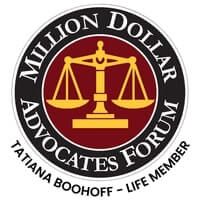

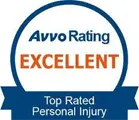
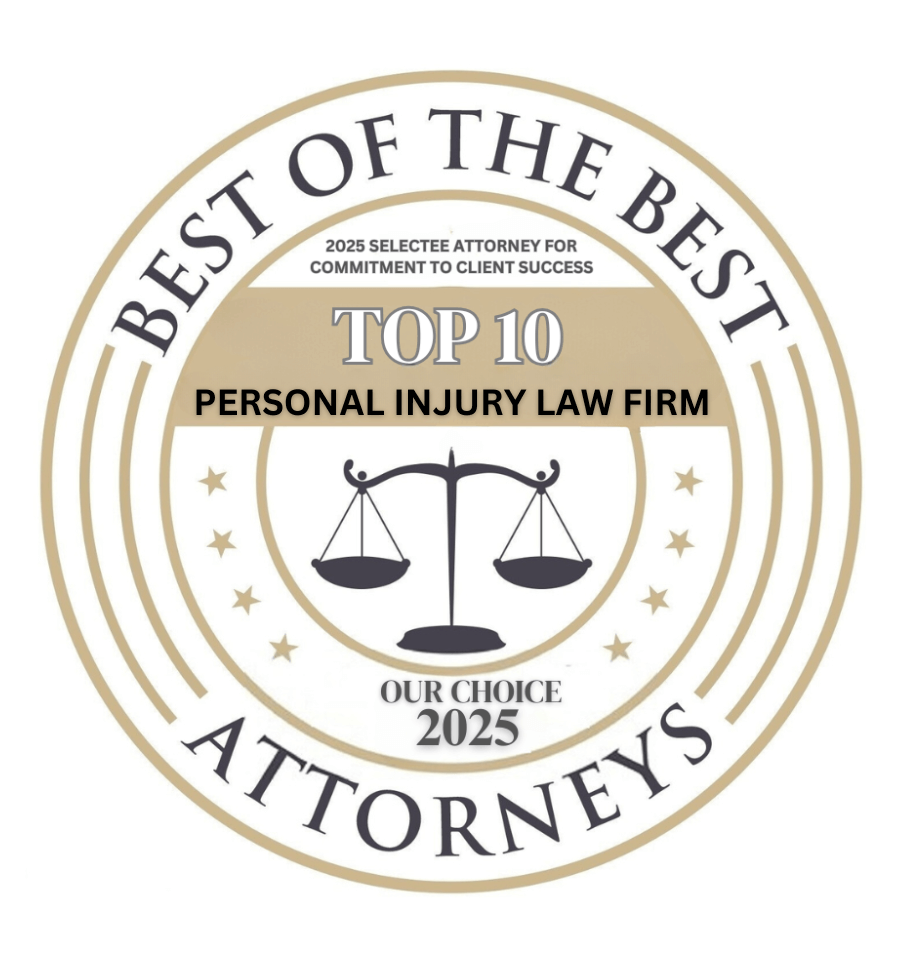
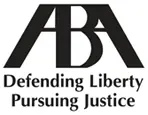
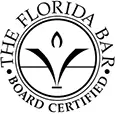
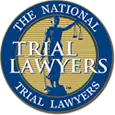



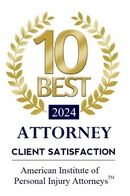
The information on this website is for general information purposes only. Nothing on this site should be taken as legal advice for any individual case or situation. This information is not intended to create, and receipt or viewing does not constitute, an attorney-client relationship.
available 24/7
(877) 999-9999
